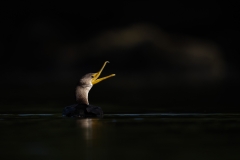Do you want sharper wildlife photos? Are you tired of deleting otherwise amazing shots because of sharpness issues? Then take a look at this quick ten minute video where I’ll share eight different field-tested (and time-tested) methods for consistently securing tack-sharp wildlife images!
As always, your comments and shares are greatly appreciated!
.
Links / Related
Other AF Fine Tuning & Calibration Methods / Systems:








Thank you so much for sharing this article. This is really an informative blog.
Hi Steve.
I followed yr technique about noise reduction but it look like in PS 2021 the thing is gone..
Can u pls advise or put me into a direction?
Cheers mate
Andre
Steve, I have my Picture Controls in my D500 set to Flat so the blinkies don’t flash too easily when shooting in harsh conditions. I have edited the Flat Picture Control to Sharpening +6 so when I zoom in to 100% on the back of the screen, it gives me an indication whether I am spot on with my focus. Am I right in thinking that my Sharpening +6 adjustment in my Flat picture Control will not affect the RAW file?
Thanks for AF fine tuning. I never used it being afraid to get a worse result if I touch the tuning. But I will try it. Will my D5 remember what lens is fine tuned? or will it apply the +or – to all my lenses?. Thanks for your thoughts.
Steve, I have a Nikon D500. I am always confused by what setting I should use under AF-C priority selection (under a Autofocus in the Custom Setting Menu). There are 4 choices: Release; Focus + Release; Release + focus; and Focus.
Which setting do you recommend when using the continuous shooting method.
I always have that setting to just Release. The other settings will hesitate or just not fire if they don’t have a confirmed lock. However, it’s not unusual for the camera to not have a confirmed lock but the area in question is still sharp. So, if I shoot, I want the camera to fire no matter what.
Oh, wow, I did not expect that choice. Obviously, I need to start using it. Thank you so much. I really appreciated all the 8 tips you gave in your video.
Curious Joyce – have you used the Nikkor 500mm PF with your D500? I tried to use it with mine and had no luck – couldn’t get it focus consistently. Jack
Jack, I don’t have the 500 PF. I have the 200-500mm Nikon lens that I use on my Nikon D500 camers.
OK, Thanks Joyce.
Thank you very much. I learned good information. Succeed.
Thanks for the great video! Another issue that rarely gets mentioned is using outer focus points on some lenses, and lens and TC combos. Using a focus point in an area where the lens is not sharp will guarantee the eyes will never be sharp. An example is the Nikon 24-70 VR, at 70mm and F2.8. At these settings and focusing with the outer AF points, your images will be guaranteed soft. The Nikon 200 f2 is one of my favourite,sharpest lenses, just don’t put on a 1.4 TC and use an outer focus point. These are expensive pro lenses,… Read more »
Does AF calibration apply to mirrorless cameras also?
It technically can due to discrepancies between the camera and lens, although it’s seldom necessary. I have yet to find a lens that I have to tune with mirrorless.
Great as always Steve! I am shooting d850 w Nikon 500 f5.6 . I am having this trouble you are talking about . Shoot later afternoon I went to shot higher shutter but iso just goes up. Would I be better to keep shutter higher and deal with high iso. Again thank you Dale
Hi Dale –
I’d rather have noisy and sharp than clean and out of focus. I can (usually and within reason) fix a noisy image, but if it’s blurry due to movement, it’s a lost cause.
Thank you Steve! I will start trying that!
Timely discussion. +1 for shooting bursts. You will induce some camera movement when pressing and releasing the shutter button. Bursts really help with this. Personally, I’d move AFMA to #1 if only to check. The calibration tools are so easy to use, why not.
Newsletter subscribed. I don’t know why I haven’t before, your material is spot on!
Thanks for singing up 🙂
I’m actually being more careful with my AFFT / AFMA recommendations now – after doing workshops and seeing LOTS of lenses poorly calibrated when they really didn’t need it, I’m much more cautious about it. I agree it doesn’t hurt to check, but people sometimes do that wrong too and end up thinking there’s a problem when there’s not. I think for more experienced shooters checking isn’t a bad idea though, just to see where it is.
Thank’s again Steve for your excellent ability to communicate and to share all your knowledge and skill; it’s always a great pleasure for me to learn more an more on wildlife photography with your precious help.
Thank you!